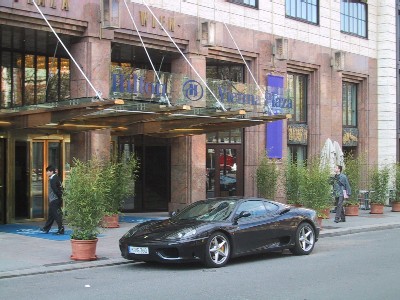

Unfortunately, this beauty wasn't parked in front of our hotel. Actually, it was parked in this spot in front of the Vienna Plaza all day. It was there when we left to go sightsee in the morning and there when we got back in the evening.
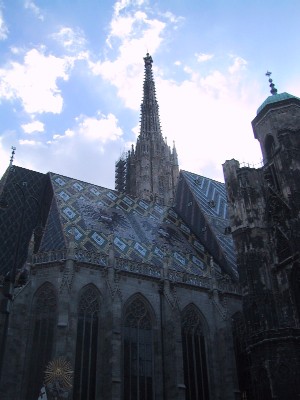
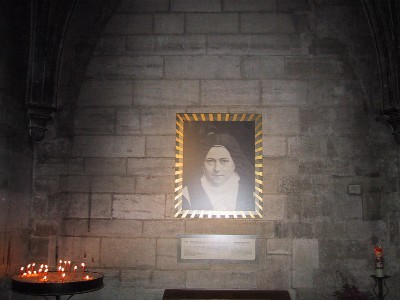
After seeing a beautiful Ferrari on our way to town, the first stop was the city center. Dominating the skyline is the Stephansdom, or St. Stephan's Cathedral. The thing is so huge, there really wasn't a good way to get the whole thing in the photo. Inside the cathedral was a shrine to Mother Theresa.
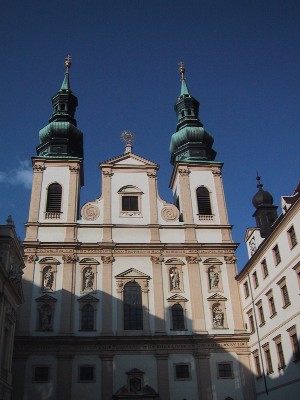
And just down the road from Stephansdom was the impressive Jesuitenkirche, or Jesuit Church.
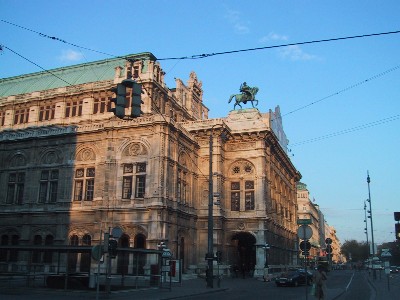
The Austro-Hungarian Empire controlled most of Central Europe during most of the 19th century. This rule was undertaken by the Habsburgs, and Franz Joseph it's most famous member. In 1857, Franz Joseph made the decision to tear down the city's fortification walls and construct a Ringstrasse (Ring Road) around the city. By having a clean sheet on which to work, he oversaw construction of a grand boulevard with some impressive buildings lining it. Above is the State Opera building, which is one of the long list of imperial buildings he built. All the buildings along the Ringstrasse have a similar bulk and style to them. Since Prague and Budapest flourished under his same rule, many of the government buildings in those cities have a similar look to them as well.


After the State Opera House, we stopped in a beautiful park called the Burggarten (City Garden) for some photos. All the buildings surrounding the garden have that same Franz Joseph "build 'em big, or don't build 'em at all" feel to them. To the right is a view of the Jugenstil Glasshouse in the Burggarten. Jugenstil roughly translates into "art nouveau".
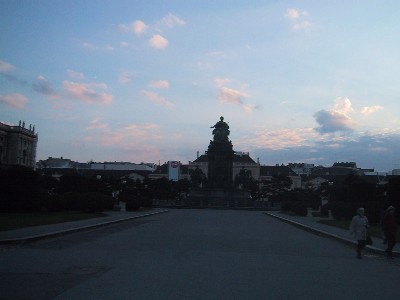
Maria Theresa was Franz Joseph's wife, and she was much beloved by her subjects. There are monuments and references to her everywhere in Vienna, as well as, Prague and Budapest. Above is one of the main monuments to her. The reverance for her is similar to that of Britain's Queen Victoria, and they ruled roughly at the same time. On either side of this statue are two buildings that are mirror images of each other. Each are huge. The one to the right is the Natural History Museum and the left is the Art History Museum.

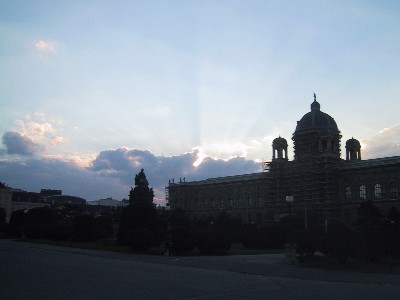
On the left is the Art History Museum, and on the right is the Natural History Museum. We only visited the Art Museum.

Just behind the two museums and the Maria Theresa Monument is the Messepalast, which is part of the Museum Quarter. From what we gathered, it is just a multi-purpose arts and museum building. Out front of the building were these two cars, which were part of a city-wide art display. Obviously, a form of demostration against the second Gulf War underway during our visit.
The red 1966 Mustang reads: "THE FIRST WHO BRINGS THE BALLS OF GEORGE W. BUSH WINS THIS CAR"
The white Roller reads: "THE FIRST WHO BRINGS THE BALLS OF TONY BLAIR WINS THIS CAR"
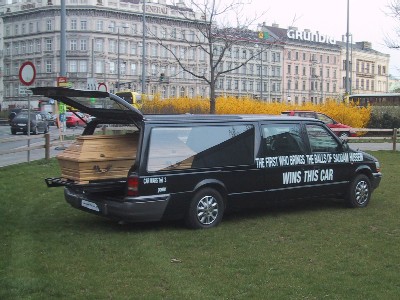
Later in the day, we came upon the next installment of the art display in front of the Technical University. The coffin in the rear is a nice touch I think.
The hearse reads: "THE FIRST WHO BRINGS THE BALLS OF SADDAN HUSSEIN WINS THIS CAR"
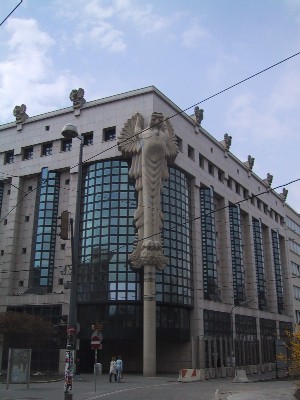
And if you ever doubted the right-wing nature of the Austrian population, then check out the eagle on the front of the Technical University!
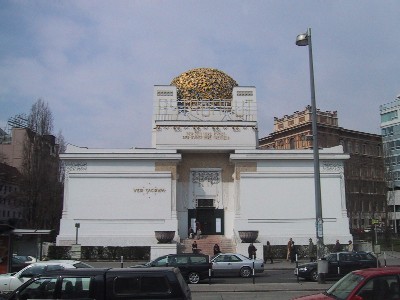
Also, near the Ringstrasse and the Technical University is the Secession Building. The Vienna Secession movement, headed by Gustav Klimt, sought to break away from the conservative art world at the time. This building was built to house many of these important works. I believe the locals call it the "cabbage building" because of the funny sculpture on the top.
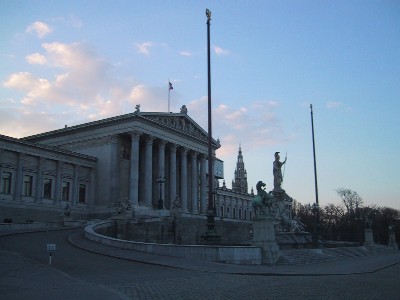
Continuing along the Ringstrasse you come across the Parliament building. Look kids!
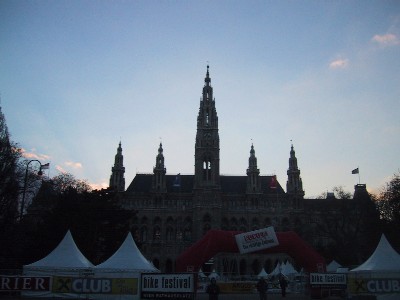

And even further down facing each other are the Rathaus (City Hall) and the State Theater (right photo).
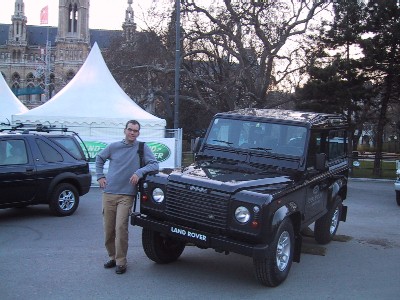
To show my friend Dan what he could have bought instead of his Defender 90, I posed in front of this Land Rover in front of the Rathaus. It was part of some display for a festival occurring the next day.
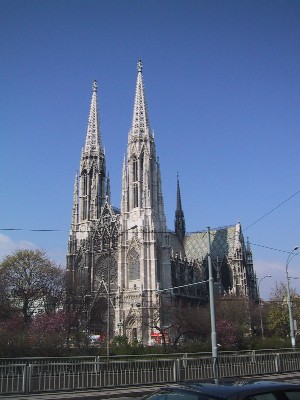
One of the last major stops on the tour of the Ringstrasse is the Votivkirche built to commemorate Franz Joseph escaping an assissination attempt in 1853.
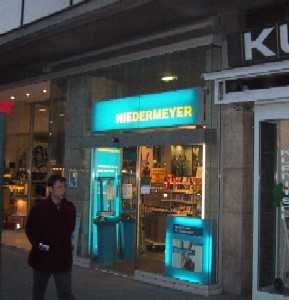
I liked the name of this store. I think my dad will be the only one that gets the joke from Animal House, and it's main antagonist.
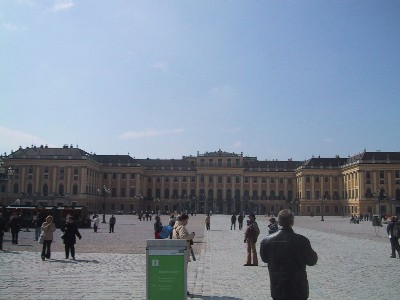

One of the little excursions we took was to see the Schloss Schoenbrunn (Shoenbrunn Palace), which was the summer retreat for Franz Joseph and Maria Theresa. Although it attempts to rival the palace at Versailles, it only comes close. The place is massive, but just not quite as ornate if you can believe it. These two pictures are of the front of the palace.
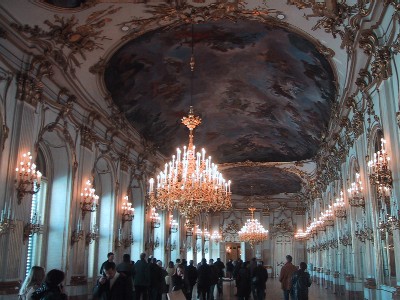
Here is a sneaky picture (pictures weren't allowed) of the main ballroom in the palace.


Here is the rear of the palace in the left picture. When I spun completely around from taking the first picture of the rear of the palace, I took the picture on the right. These are the gardens leading to a big monument gate on the hill. The actual garden complex covered hundreds of acres and this little strip was just to highlight the view from the palace. Pretty impressive.
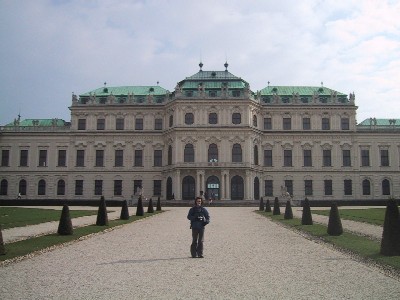
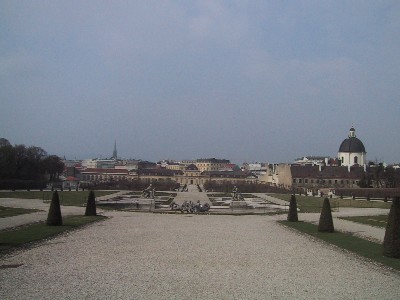
Another palace we went to was the Scloss Belvedere. Erynn is standing in front of the upper palace, and the picture on the right is of the lower palace at the bottom of the garden. You can see the pointy spire of the Stephansdom in the background.
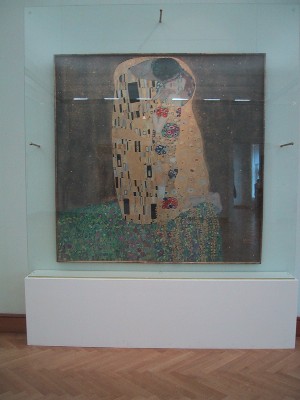
The most famous painting by the most famous artist of the Vienna Secession movement was "The Kiss" by Gustav Klimt. The painting is located in the upper Belvedere palace, which is now a museum. Don't worry I didn't use the flash.

I was glad to see that the Austrians could get their American football fix by watching the Danube Dragons!
To see some more information concerning Vienna and Austria in general, check out the Austria Resources at IAQI. Thanks to Joe Clawson.